Tag: welding training

Welding is undoubtedly worth exploring if you’re looking for an interesting career path that allows you to use your hands and create tangible results. Welders use metal to build various structures, from intricate decorative pieces to reinforcements for our bridges and large buildings. Several industry-specific competencies and soft skills are required for success as a welder. As with any career path, quality training is an excellent place to start.
North American Trade Schools offers a comprehensive Structural & Pressure Vessel Welder Diploma Program to equip you with all of the skills you’ll need to be employed in the welding field with confidence. Math for welding, health and safety concerns, and welding theory are just a few topics covered at length in our program. In addition, students can practice their welding skills in practical labs. Keep reading to discover what skills you can expect to learn in our training program and how they’ll help you succeed.
1. Physical and Administrative Capabilities Are Required
Welding is a physical job that requires a fair amount of strength and endurance. Everyday welding tasks include lifting, twisting, and bending to assemble and dismantle heavy-duty equipment. Welders also benefit from a steady grip as they must hold a torch steady for extended periods. After welder training, your eyes will be as important as your hands. Excellent depth perception, hand-eye coordination, and close vision will help you create consistently accurate results.
While having a physique is beneficial, administrative skills are equally as important.
Welding is a project-based career path. To succeed, you should possess excellent project management skills. This involves effective time management to meet deadlines, good project planning, organization, thorough documentation practices, and teamwork.
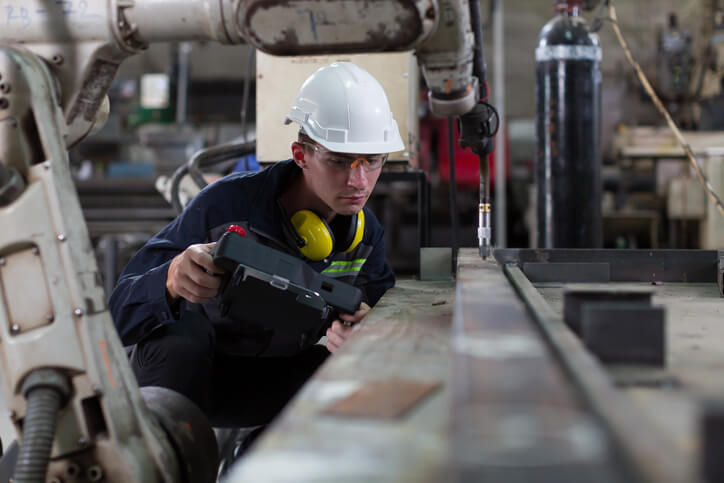
Though much of your work as a welder will be done independently, effective communication skills are essential to your productivity since you must collaborate with other team members, supervisors, and others working on your job site or factory.
2. Attention to Detail and Numerical Skills Help in Welder Training
Welders are required to produce results with minimal flaws. If you’re naturally detail-oriented, you’ll be well prepared to notice and fix grease buildup, corrosion, bubbling, and cracks on your work. As a welder, parts, material, and equipment inspection will be a regular part of your role, which requires taking note of issues quickly.
Your attention to detail will also help you maintain a safe work environment since you will often work in dangerous surroundings after welding college. In addition, flaws in your work could have public safety implications, so it’s important to make double and triple-checking a habit. Like other welding skills, you will have plenty of opportunities to refine your attention to detail during training as you learn what imperfections to look for in materials, equipment, and your projects.
Though you won’t need to understand advanced algebra to succeed as a welder, numerical skills are handy. Our Structural & Pressure Vessel Welder diploma program covers basic math for welders, which will help you calculate dimensions, interpret sketches, read blueprints accurately, and understand two- and three-dimensional diagrams. Good math skills will help you with your day-to-day welding tasks, logical reasoning, and problem-solving on the job.
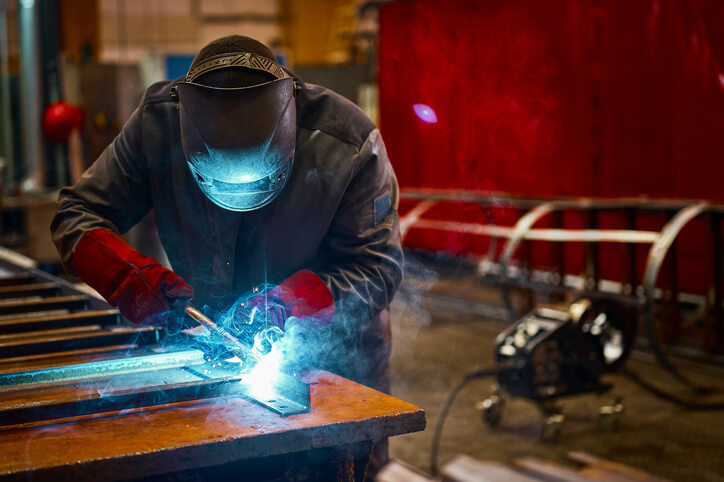
3. Mechanical Skills Will Help You Use Tools Properly
Welders work on various projects and must understand the technology and tools that will make their work more accessible and more effective. In our program, you will have the opportunity to practice using welding equipment in a state-of-the-industry lab environment under the supervision of our expert instructors.
Students learn how to use modern tools for welding, commonly used techniques like gas metal arc welding, gas tungsten arc welding, flux cored arc welding, and shielded arc metal welding. If you’re mechanically inclined and enjoy learning about new technologies, this part of your welding training will undoubtedly be fulfilling.
If you have what it takes to become a successful welder, start training today! The Structural & Pressure Vessel Welder diploma program will help you transform your natural aptitudes into highly marketable skills in an exciting industry!
Are you ready to earn your welding diploma?
Contact NATS to learn how you can get started.
Considering Welding Training? A Day in the Life of an Apprentice Pipefitter
December 20, 2022
Pipefitters play very essential roles in the environmental context. They oversee the safe assembly, installation, and maintenance of a building’s pipe systems after studying the building’s blueprints. In addition, they also supervise the safe discarding of debris after every welding job, among other specialized duties.
To execute their duties optimally, pipefitters need to develop a unique set of skills. Some of these skills can be taught–trade schools in Canada offer programs that provide theoretical education. However, mastery of these skills can only be achieved through hands-on experience.
This is why a pipefitter apprenticeship is critical after completing your welding training. An apprenticeship typically lasts between three and five years. It offers a chance to learn the ropes of the trade under the watchful eyes of a veteran before you’re ready to stand on your own.
What do apprentice pipefitters do during this period? Here’s a peek at the daily routines of an apprentice pipefitter.
Apprentice Pipefitters Put Their Welding Training Into Practice
While a good welding program provides students with theoretical and practical learning, an apprenticeship enables them to truly dip their toes into the role, assisting and learning directly from veteran welders while putting the knowledge they learned into practice. The apprenticeship period allows budding welders to truly learn on the job.
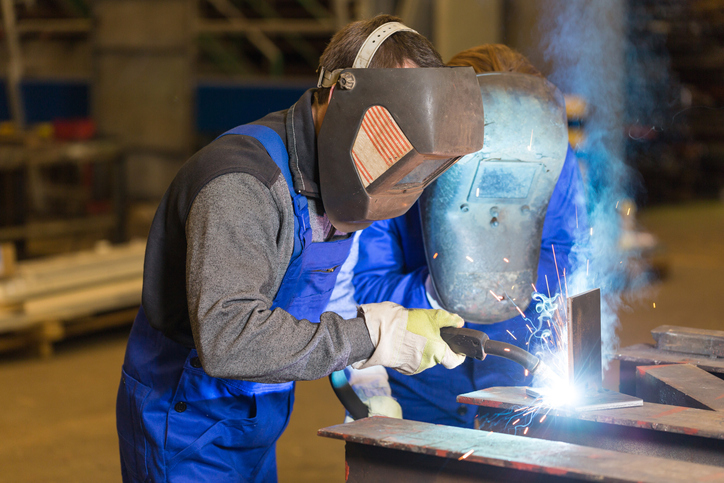
Apprentice pipefitters honing their crafts under a veteran welder carry out their learning in the field. Apprenticeships are designed to give apprentices a good idea of what to expect from a career as a welder. To achieve this, greater emphasis is placed on practical education.
What this entails is that apprentice pipefitters are allowed to perform all the duties a veteran welder may be expected to perform, including:
- Testing pipe systems to ensure functionality and safety
- Assembling and securing tubes, pipes, and other fittings
- Installing, troubleshooting, and maintaining piping systems
- Testing installed systems and verifying compliance with industry standards
- Measuring, cutting, and threading pipes to specifications
- Using and maintaining industry-specific tools and equipment
Assist Veteran Welders
As part of their training, apprentice pipefitters assist master tradespeople with specific tasks on jobs. The apprentice may not be tasked with anything particularly dangerous or difficult at first; however, smaller tasks like fetching the welder’s tools, assembling and cutting pipes, and cleaning up the site after a job are part of the apprentice’s role.

With time, as the apprentice develops their skills and confidence, they will be trusted with more specialized duties.
Interact with Customers
As part of their welding technician training, apprentice pipefitters must develop soft skills. Hands-on training takes care of such skills as attention to detail and resilience, but good interpersonal and customer relations skills can only be honed through constant customer interaction. Thankfully, welding training takes care of these too.
On days when they go out on a job with their veteran welder trainers, apprentice pipefitters often serve as links between customers and the welder. They answer the customers’ questions and queries and relay their instructions to the welder.
Interested in training at a reputable welding college?
Contact NATS to learn more about our programs.
Careers in welding are a great move for people looking for exciting, fulfilling, and rewarding careers where they can use their hands and specialized skills. If you’ve always wanted to travel, have your pick of different specializations in your career, or if you like being judged based on skill, it might be the path for you. Welding classes can set you on the right track to building your skills and discovering what you want to do within the world of welding. Graduates move on to become apprentices to ironworkers, pipefitters, construction millwrights, boilermakers, or welders. The opportunities are vast and you can find the place where you fit best.
If you’re thinking about welding training, it can be helpful to see why your future career could be a rewarding choice for you personally. Read on to learn what the profession has to offer and how you could benefit from it.
Why a Career in Welding Could Be a Great Move for You
You Can Have Travel Opportunities
- Welding is a useful skill in many environments, including under water!
- Some people in the welding industry travel for a living
- It’s common for welding jobs to pay for travel
Apprentice Welders Can Support one Another
- Many online communities exist for welding
- Sharing and trading advice, information, or opportunities is common
- The large community can make finding jobs easier
You’ll Be Judged Based on Your Skill Level
- Many employers require a hands-on test
- After your training, you can secure a job with your skills
- Many positions will not involve judging you primarily on experience level
It’s a Profession that Is Valuable in Many Industries
Students of welding programs can become:
- Apprentice ironworkers
- Apprentice pipefitters
- Apprentice construction millwrights
- Apprentice boilermakers
- Apprentice welders
Apprentices Get to Learn From Others on the Job
- Paid positions in the field give you a chance to master the trade
- You can make connections and contacts in the industry
- Take your training to the next level by applying it to a real-life situation
It’s Also an Art Form
- Creative people might choose to expand their welding to include a hobby
- Metal sculptures can be made using welding skills
- This is a way to use training to satisfy both artistic and technical pursuits
Fun Fact: About half of all products manufactured in the world have welding as a part of their construction. These products include bridges and computers.
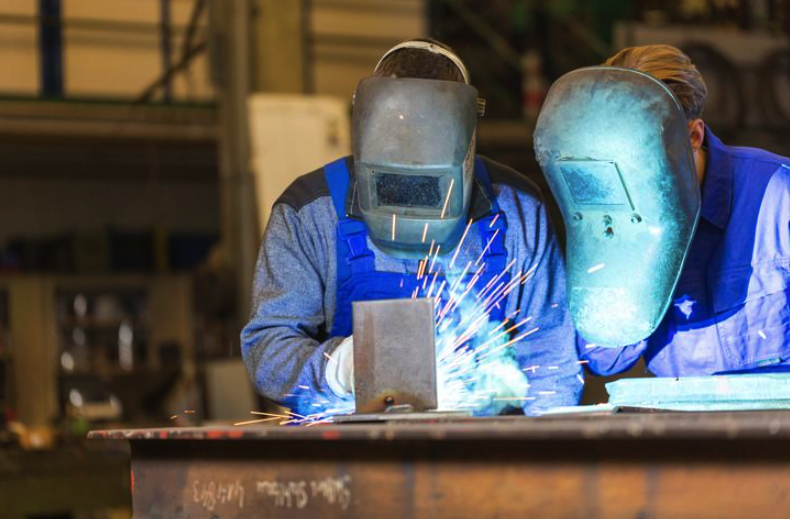
Looking for a rewarding career that can teach you many new skills and allow you to work with your hands to build and fix things every day? Welding might just be the right choice for you. Should you decide to pursue a career in this field, going to welding school can help set you up for a future in this profession. A great welding training program can teach you about the trade through both a theoretical and practical lens.
Those who pursue welding as a career path can open themselves up to a hugely gratifying profession. Here are some reasons why you should consider welding school to fulfill your career ambitions.
Welding Is a Fantastic Career, Especially if You Have the Personality For It
Are you a patient, creative, hard-working individual who relishes the challenge of working in an intense environment? Welding is a career that caters to exactly these kinds of people. Welders are typically subjected to a large amount of smoke and heat, all while wearing heavy protective gear like coveralls and a mask. This type of work requires a great amount of endurance, as well as the knowledge and instincts to be able to join metal pieces together with the utmost care and accuracy. As a trained welder, you might have opportunities to work in several different industries after completing an apprenticeship, such as: manufacturing, oil, construction, architecture, and more. If any of these job prospects interest you, welding could be a great fit for your professional career.
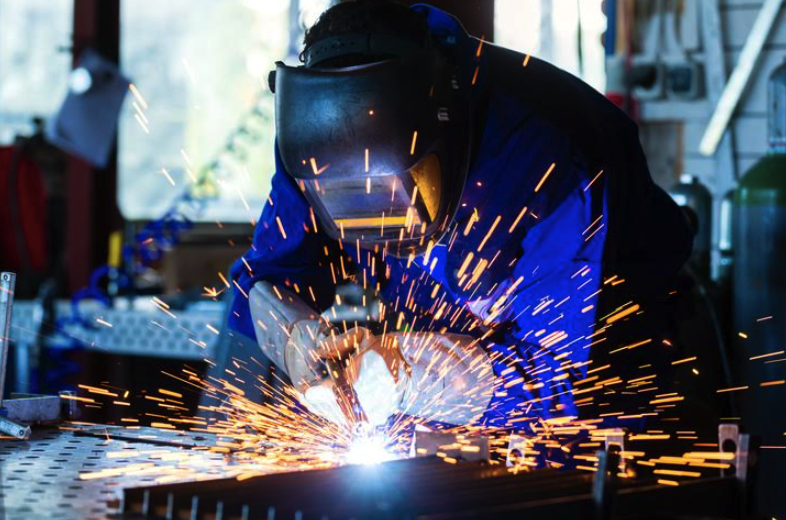
Taking a Welding Diploma Program Can Teach You Many Lessons About the Trade
If you’re looking for a way to gain the foundational knowledge necessary for success in the welding industry, starting your welding training is your ticket. At NATS, our welding program offers students the opportunity to learn about the trade over 55 weeks. During the program, you can learn about concepts such as welding processes, equipment, safety standards, blueprint reading, and positional welding. Furthermore, students at NATS can use our on-campus labs for hands-on learning. Here, processes like MIG (Gas Metal Arc Welding) and TIG (Gas Tungsten Arc Welding) welding are learned through the use of modern equipment. This helps give students practical, real-world experience before even setting out to work in the field.

You Won’t Need Prior Experience to Get Started in Welding Training
At NATS, some students come to the welding program having already gained a bit of welding practice beforehand. “I chose to study welding, because I did it in high school,” says Emily Harrison, a graduate of NATS’ welding program. “I’m a bit of an artist, and I wanted a little bit more knowledge and a little bit more practicality for the future.”
However, those hoping to attend welding school should also note that they don’t need any prior experience to get into the program. Even without any base knowledge of the trade, taking a welding program can provide you with the training to open you up to various career opportunities, often starting out as an apprentice welder to further sharpen your skills in such roles as ironworker, boilermaker, pipefitter, and more. Not only do you not need experience or a university degree to enter the field, but you also have a wide range of career choices available to you—making welding a great choice for fulfilling your professional aspirations!
Do you want to begin your welder technician training?
Contact North American Trade Schools today to learn more!

When you first look at welding symbols, you may be overwhelmed by the seemingly arbitrary shapes and numbers. However, despite what you initially think, these symbols do have deeper meaning—and knowing this meaning will work wonders for your future welding career.
These symbols are often found on welding project blueprints, and are used to communicate between the designer and the welder. Without understanding these symbols, you won’t know what specifications a weld requires.
If you’re interested in becoming fluent in the language of welding symbols, read on!
Welding Symbols 101 for Those in Welding Training
Welding figures generally consist of five main figures: arrow, leader line, reference line, tail, and weld symbol (not to be confused with the welding symbol, which represents the entire diagram). Confused yet? Let’s explain them figure by figure.
The arrow, for starters, points to the part of the diagram where the weld is needed. Attached to the arrow is the leader line, which intersects with the reference line. In the middle of the horizontal reference line is the weld symbol: this represents the type of weld required. Finally, at the opposite end of the reference line, you may find the tail—it is only required for special instructions—which forks off in opposite directions.
How to Interpret Welding Symbols
As you’ll learn in welding training, the location of the weld symbol vis-à-vis the reference line determines which area of the joint you should perform the weld.
If the weld symbol is under the reference line, you should make the weld on the same side as the arrow. However, if the weld symbol is located above the reference line, you should make the weld on the opposite side of the arrow. But if the symbol is on both sides of the reference line, then, as you can imagine, you must perform the weld on both sides.
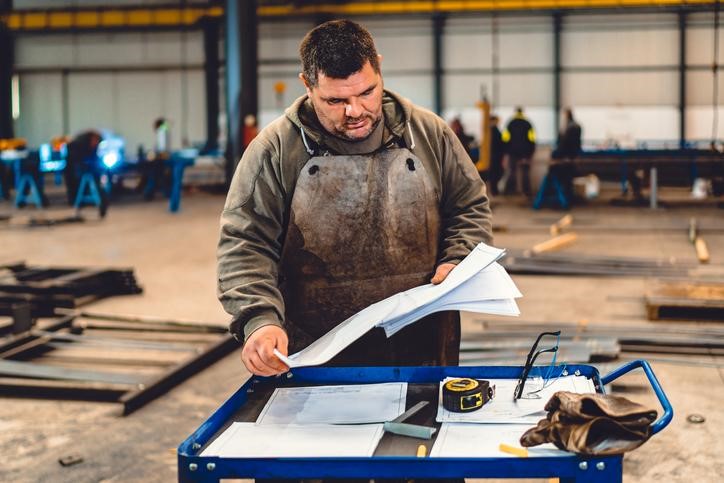
Understanding Dimensions and Angles in Welding Symbols
In addition to shapes and lines, welding symbols can also include numbers that communicate the depth, diameter, and length of a weld–along with the beveling angle, if applicable.
In many cases, you will find the weld diameter (or width) on the left-hand side of the weld symbol. The length of the weld is found on the right. If the length is not indicated on the welding symbol, you should conduct the weld from the beginning of the joint to the end.
The reference line also plays a part in understanding the dimensions of a weld, just as it did for the weld type. Any dimensions indicated below the reference line pertain to the joint on the side of the arrow. Dimensions above the reference line pertain to the joint on the opposite side. If dimensions are indicated on both sides of the reference line, then you should weld both sides of the joint.
If these numbers, figures, and placements seem complicated, fret not—welder technician training is there to help you decipher these symbols with ease.

Do you want to get your welding diploma?
Contact North American Trade Schools to get started!

The beginning of a new year, particularly a new decade, is the perfect time to consider starting a new career. If you’re a practical person looking for a challenging but rewarding trade which offers high pay and the opportunity to work in various countries and industries, welding could be the industry for you.
Welders make and put together metal parts using heat. They are most commonly employed in the oil, gas and mining industries, but also work in the automotive, marine and military sectors.
Skilled welders are always in demand, and this demand is expected to increase this year thanks to retirement numbers and developments in energy and manufacturing.
Read on to find out why now is the perfect time to enrol in welding training.
Welders Are Always in Demand
Figures show that this year Canada could face a ‘baby boomer retirement’ crisis, as ‘baby boomers’ (those born between 1946 – 1964) retire in huge numbers. This is good news for those starting a new career in a trade like welding, as there will be plenty of job opportunities. The Canadian Government estimates that may be as many as 24,000 new job openings across the country between 2017 and 2026.
As well as this, there is lots of development happening in the energy sector right now which will create demand for welders. The nation is looking to invest in better sources of renewable energy, as well as continuing to build infrastructure for current sources like wind turbines and solar panels. These are often made using metal, meaning that welders will be needed.

Skilled welders with specialized experience in Gas Metal Arc Welding (GMAW), Gas Tungsten Arc Welding (GTAW), Flux Cored Arc Welding (FCAW), and Shielded Metal Arc Welding (SMAW) are among the most in-demand.
As part of your welding technician training at North American Trade School, you will gain practical experience in each of these techniques, putting you in an excellent position to find employment after graduating.
Work in a Variety of Industries with Welding Technician Training
Studying to become a welder can lead to a career in a wide variety of industries. Welders are needed in almost every area of manufacturing, construction, energy, and repair and maintenance, and are also able to switch between industries throughout their careers.
Welders can choose to work in factories, on ships or shipyards, as part of the military repairing military tanks and vehicles, as well as in the engineering, oil, gas and mining industries.
As well as this, there is always the opportunity to take your career a step further with extra studying, which could open up opportunities in robotics or education.
The Opportunity to Travel the World
If you’re looking for a career that will take you all over the world, then look no further. Demand for welders is increasing internationally, not just in Canada.
You can also work in interesting and unusual environments. A welder working on board a cruise ship, for example, would be able to visit multiple countries while working, and would also benefit from high pay, as well as free room and board.
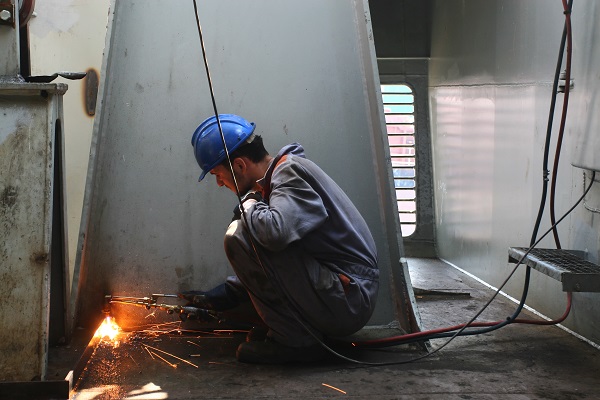
Additionally, some welding jobs structure their contracts to allow you a lot of time off, such as roles where you work on the road for six months and then have six months off.
Earn a Competitive Salary
Welder salaries vary depending on skill, experience and location. Highly skilled welders that are prepared to travel can earn well over six figures. Welders working with the military in the Middle East can also expect to receive high pay because of the risk involved.
Are you interested in taking the next step in your career with welding training?
Contact North American Trade School to find out more!
Key words: welding training, welding technician training, become a welder
Finishing Welding Classes? Here’s How You Can Land Your Dream Apprenticeship
December 24, 2019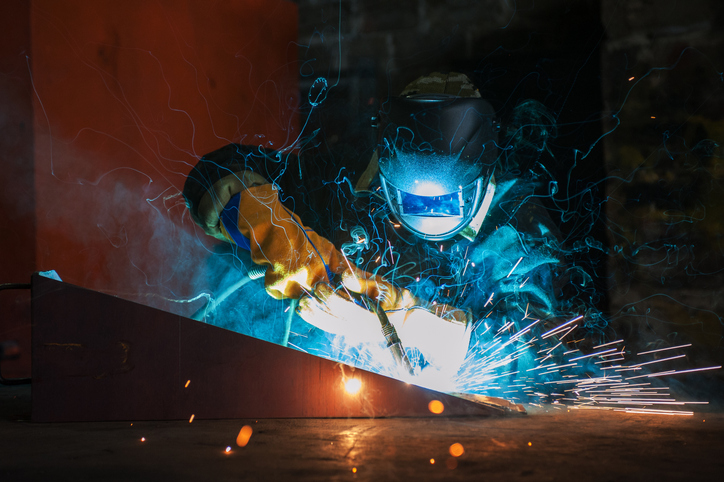
Welding can be a challenging job, but also a rewarding one. Getting an apprenticeship is what helps students on their way from the classroom to a welding career, and gives them the knowledge necessary to move up to journeyman status. Students who love working in hands-on environments can thrive in this type of career, and there are several ways in which they can get the kind of training they want.
Although getting welding training at an educational institution is an essential step in the process, what you do after your schooling is even more important than what you do during it, and getting the best possible apprenticeship can help build a foundation for anyone wanting to work in a skilled trade such as welding. Here are some tips for you to land your dream welding apprenticeship.
Get the Right Welding Training, Both in and Out of the Classroom
Finding the right apprenticeship opportunity can begin with the right training program. In Canada, apprenticeship programs vary between provinces, but they often require classroom time during a span of six to eight weeks per year, as well as paid, on-site training between two and five years. For welding specifically, the combination of classroom time and on-the-job training amounts to about 6,000 hours, or around three years.

Whilst in school, students can learn various aspects of the trade through their welding courses. For example, the Structure & Pressure Vessel Welder diploma program at North American Trade Schools can teach welding students about concepts such as positional welding, blueprint reading, electrodes, consumables, and various welding processes.
How On-Site Training Can Give Students the Tools They Need for Success
Anyone hoping to have a career in welding in Ontario must become a member of the Ontario College of Trades, and must remain part of the College throughout their apprenticeship. As an apprentice on the job, students will be given instruction from a skilled worker, and the apprentice’s sponsor is tasked with signing the parts of the training standard demonstrating that the apprentice has met all necessary training requirements.
Apprenticeships can also pave the way for students to get good-paying jobs after their training. Apprentices get paid in the meantime so they can earn and learn at the same time. 90 per cent of the training for an apprenticeship takes place on the job, and the student will need to find a sponsor who can help provide them with the necessary training.
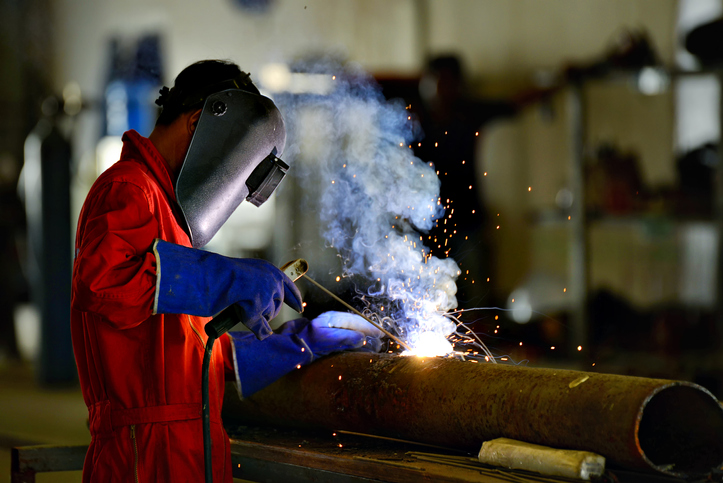
What a Student Needs to Do to Get the Most Out of Their Apprenticeship
Students should research various welding training programs, and call the schools to get more information on what each offers. Similarly, they can reach out to businesses offering apprenticeships or other welders to get tips and insights on how to get the apprenticeship they want after their welding courses. Since many training facilities are in close contact with companies hiring welders, they can work together to offer the best possible apprenticeship programs to students.
Furthermore, the length of an apprenticeship can be determined by how much prior work experience and classroom education the apprentice has under their belt. NATS’ welding diploma program also teaches students about searching for jobs, crafting resumes, and what they can expect during an interview for a job in welding to help them land an apprenticeship.
Want to attend welding classes?
Contact North American Trade Schools for more information!
A Look at Consumable vs. Non-Consumable Electrodes If You Want to Become a Welder
November 07, 2019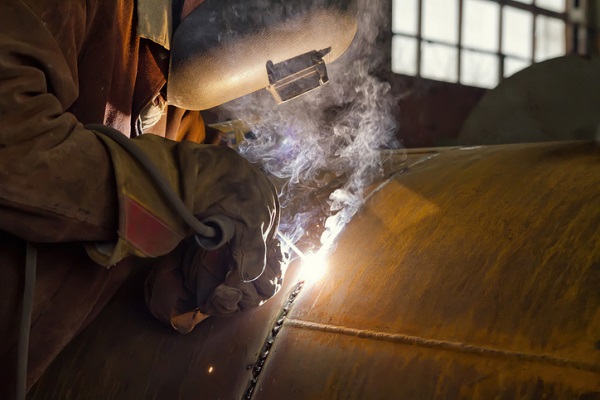
Different types of electrodes, also known as rods, are categorized based on their material, diameter, coating and whether they are consumable or non-consumable. The most common type of rods are steel, which may be mild, low alloy, or stainless, but there are also bronze, aluminum, and composite welding rods. It is part of the welder’s job to decide on which type of rods to use for different projects. The material of the core wire of a rod will depend on the type of metal being welded, also referred to as the parent material.
In order to choose the right material and type of rod, a welder must know the differences between consumable and non-consumable electrodes. Each is used for different applications and, with theoretical knowledge and hands on experience, a trained welder will know how to make these decisions to ensure quality welds.
First: a Few Basics of Welding Training
Before getting into the specifics of consumable and non-consumable electrodes it is important to set up some foundational points for your welding training. An understanding of what flux covering (or coating) is along with what a weld pool is, will give you a greater understanding of the main differences between consumable and non-consumable electrodes.

Flux coating is a layer of chemicals that covers the rod and burns off during welding. This produces an inert gas that protects the weld pool and solid metal from atmospheric contamination. Oxygen will weaken the bond of your joint and impurities in the weld pool can also cause problems. Typically, though not always, consumable rods have flux coating. Non-consumable electrodes usually do not, meaning they require the use of shielding gases.
The weld pool is the small coin-shaped part of a weld where the base metal is at its melting point. This is where a welder will either use filler material, in the case of non-consumable electrodes, or not use filler in the parent materials requiring consumable electrodes.
Consumable Electrodes
The key characteristics of consumable electrodes are the following: they have lower melting points, they are usually used in metal inert gas (MIG) welding, they are typically made of mild steel or nickel steel and they are used in arc welding. The lower melting point means that they melt away, or are consumed as the welder works. This also means that they have to be replaced on a regular basis.
There are four types of consumable electrodes if you are considering flux coating and they range from bare (no flux coating) to heavily coated. While there are even more variations in terms of the types of coating that may be used, overall, it is worth noting that consumable electrodes have fewer industry applications.
Non-Consumable Electrodes
As indicated by the name, non-consumable electrodes do not melt away in the process of welding. As a student in welding school you should know that non-consumables are made from materials with higher melting points. These materials include tungsten, carbon and graphite and although these materials will not be consumed during the weld, the rods may lose length due to vaporization and oxidation.
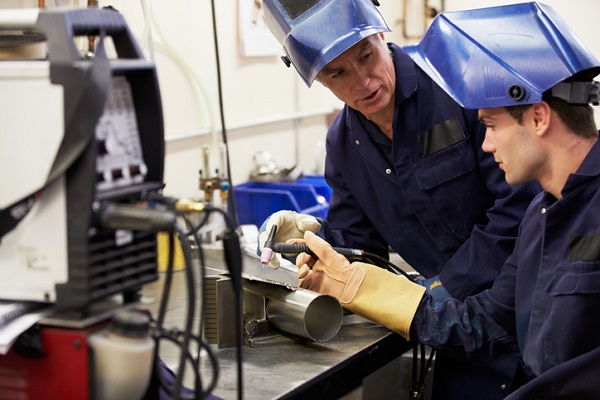
When using non-consumable electrodes a filler metal is necessary to make the weld pool. Shielding gases that would normally come from flux coating are also required to protect the welding area. Another factor to consider is that tungsten electrodes are more expensive than carbon or graphite electrodes. However, the choices you make will likely depend mainly on the parent materials.
Want to learn how to become a welder?
Contact North American Trades Schools to get started!






